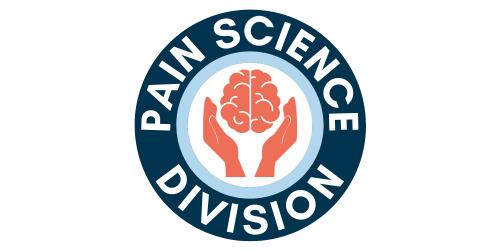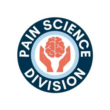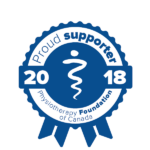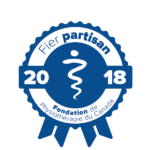Is my Patient Going to Get Better?

Is my patient going to get better? The art and science of predicting the future
Submitted by: Dave Walton, PT, PhD
Predicting outcomes of acute injuries, especially things like whiplash associated disorder (WAD) or occupational low back pain, is becoming a hot topic. Patients want to know things like how likely it is that they will recover and how long it should take. Clinicians want to know how to answer these questions in order to manage their patient’s expectations, and because they realize that some people probably don’t need a whole lot of intervention while others may benefit from inter-disciplinary intervention early. Policy makers should be interested in this question because they should recognize that not all people recover at the same rate (italics intentional). This paper will provide a high-level overview of the current state of what the research can tell us about predicting the future, and will finish with some real-life application suggestions for busy clinicians.
Researchers have evaluated many (>300 at last count) potential predictors of persistent problems in the WAD population alone over the years. Unfortunately, for all of the resources dedicated to what are often challenging longitudinal research studies, there are relatively few predictors for which adequate evidence exists to give us confidence in their predictive capacity[1]. Those are:
- High (6/10 or greater) pain intensity in the acute stage
- High (>15/50) baseline score on the NDI
- Elevated post-traumatic stress symptoms (‘elevated’ not yet well defined, nor is the best tool for measuring it yet known)
- Elevated catastrophizing scores (you can probably consider a Pain Catastrophizing Scale score >20/52 as ‘elevated’)
- Cold hypersensitivity / hyperalgesia (jury still out on the best definition of hypersensitivity, but those indicating temperatures of 13°C or higher as painful are probably hypersensitive)
On the other hand, the evidence base also offers enough consistency to indicate that the following factors do not affect post-trauma recovery: angular deformities of the neck (e.g. scoliosis, flattened lordosis), direction of the impact (e.g. rear vs. front vs. side), seating position in the vehicle, awareness of the impending collision, whether or not a head rest was in place, whether or not the target vehicle was stationary, and older age. That said, all of this information has been gleaned from systematic reviews or meta-analyses, which themselves are only as strong as the primary sources from which the data came. And as someone who has read the primary sources and done a fair bit of this data synthesis personally, I’ll say that the primary sources still leave many questions unanswered. Personally, I’m more convinced by the first list (things that affect outcome) than I am the second (things that don’t affect outcome), and believe there is still a fair bit of work yet to be done there.
As with a lot of research, findings such as these often lead to more questions than answers. It appears that it is not terribly difficult to identify people at very high risk or at very low risk. The best predictor of any outcome is always going to be the scores on that same outcome at baseline, so if the NDI is your outcome du choix (appropriateness of that to be tackled another time), then using the NDI as one of your intake questionnaires just makes a lot of sense. However, while a very high or very low score gives you a reasonably good estimate of outcome anywhere 3 to 12 months down the road, there’s still a large group of people in the middle that are sort of in prognostic limbo until you see how they respond to the first few visits. Our research at the Pain and Quality of Life Integrative Research Lab (www.pirlresearch.com) [2] and that of our colleagues [3] would suggest that there are at least 3 groups that need to be identified: those that recover quickly, those that don’t recover at all (or very slowly), and a middle group that could arguably go either way. The first 2 groups generally appear to account for 30-40% of the people in any sample, leaving 60-70% of that population as ‘maybes’ that might require further work up and a bit of wait-and-see to really establish your prognosis.
Of course, once you’ve established a prognosis, the next logical question is what to do about it? In the case of a favourable prognosis, the best approach is to probably just lay off; offer some advice, education and reassurance and let nature take its course. A follow-up at 1 or 2 weeks (if even by phone) to make sure things are heading in the right direction might be all you need. For those with unfavourable prognoses though, the current evidence doesn’t offer a whole lot of guidance. It becomes even more challenging when you realize that the interactions between different risk factors have yet to be explored in any great detail. It’s also very possible that there are other variables affecting both predictor and outcome (i.e. confounders) that are actually ‘causing’ the persistent problems that have yet to be researched. Two very good randomized trials using risk-factor targeted treatment paradigms for acute WAD have been published within the past 18 months[4,5], and both have found that the active, targeted intervention groups didn’t fare much better than the ‘standard care’ groups. While this may seem somewhat damning, my perspective on these is that it demonstrates once again that, while we can predict outcomes by virtue of the pattern of numbers a patient circles on a form about the ‘terribleness’ of this experience, there are other more important mechanisms that yet need to be identified.
To summarize the bulk of prognostic literature to date, measures of negative affect or ‘distress’ consistently prove to be predictive of outcome. However, that shouldn’t be taken to assume that such people are ‘weak-willed’, ‘thin-skinned’ or ‘misinformed’. Distress and negative affect have very real, very quantifiable correlates in physiology that can influence recovery from injury[6]. We’re getting very close to a time when we’ll be able to not only ask people about their negative psychological orientation towards their experience, but also be able to identify maladaptive stress responses that, hopefully, will open new avenues for intervention that finally stem this epidemic of chronic pain.
References
[1]Walton DM, Caroll LJ, Kasch H, Sterling M, Verhagen AP, MacDermid JC, et al. An overview of systematic reviews on prognostic factors in neck pain: results from the international collaboration on neck pain (ICON) project. Open Ortho 2013;7(Suppl 4):M9.
[2]Walton DM, Eilon-Avigdor Y, Wonderham M, Wilk P. Exploring the Clinical Course of Neck Pain in Physical Therapy: A Longitudinal Study. Arch Phys Med Rehabil 2013 Sep 18.
[3]Sterling M, Hendrikz J, Kenardy J. Similar factors predict disability and posttraumatic stress disorder trajectories after whiplash injury. Pain 2011 Jun;152(6):1272-1278.
[4]Lamb SE, Gates S, Williams MA, Williamson EM, Mt-Isa S, Withers EJ, et al. Emergency department treatments and physiotherapy for acute whiplash: a pragmatic, two-step, randomised controlled trial. Lancet 2012 Dec 18.
[5]Jull G, Kenardy J, Hendrikz J, Cohen M, Sterling M. Management of acute whiplash: a randomized controlled trial of multidisciplinary stratified treatments. Pain 2013 Sep;154(9):1798-1806.
[6]Glaser R. Stress-associated immune dysregulation and its importance for human health: a personal history of psychoneuroimmunology. Brain Behav Immun 2005 Jan;19(1):3-11.



